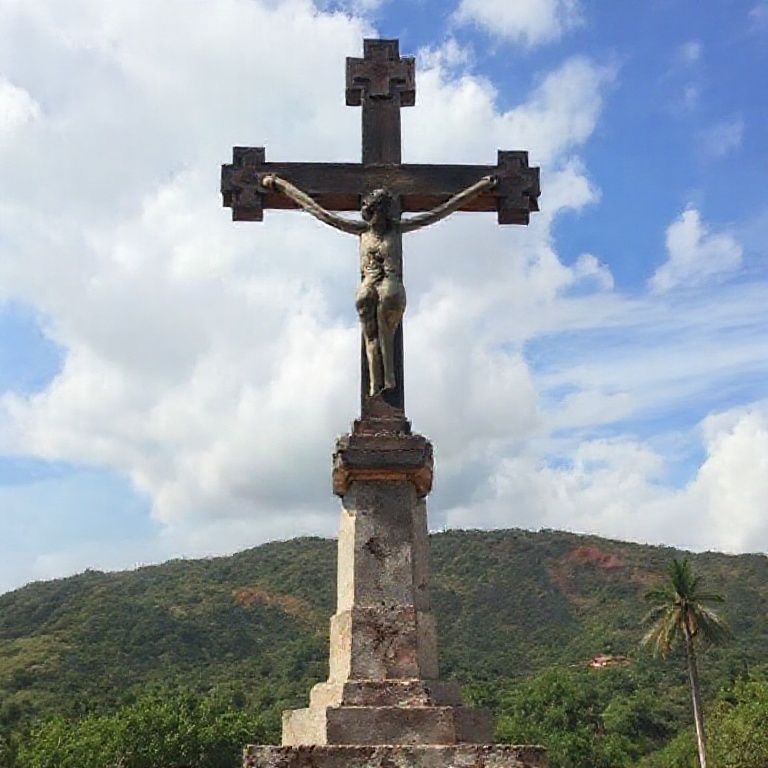The cross is a ubiquitous symbol in Mexico, far more than just a religious emblem. It’s woven into the nation’s history, art, traditions, and even everyday language. From towering church steeples to humble roadside shrines, the cross stands as a powerful reminder of faith, resilience, and the enduring blend of indigenous beliefs and Catholicism that defines much of Mexican culture. Understanding the importance of the cross provides a deeper appreciation for the country’s rich and complex tapestry.
This article delves into the multifaceted significance of the cross in Mexican culture, exploring its historical roots, its various manifestations, and its enduring influence on the lives of the Mexican people. We will uncover how a symbol of conquest and conversion transformed into an emblem of identity, hope, and cultural pride.
Historical Roots: From Conquest to Conversion
The arrival of the Spanish in the 16th century marked a turning point in Mexican history. The conquistadors brought with them not only their weapons and ambition but also their Catholic faith. The cross, a central symbol of Christianity, became a prominent tool in the conversion of the indigenous population. Churches were built on the sites of ancient temples, and crosses were erected in public squares, symbolizing the triumph of the new religion over the old.
The Syncretism of Beliefs
However, the indigenous people did not simply abandon their ancestral beliefs. Instead, they cleverly integrated elements of their own spirituality with the new Catholic faith. This syncretism is evident in the way the cross is often adorned with flowers, ribbons, and other offerings that echo pre-Hispanic traditions. The cross became a bridge between two worlds, a symbol of both faith and cultural survival.
- Atrial Crosses: These large stone crosses, often found in churchyards, served as focal points for outdoor religious ceremonies and instruction for the newly converted indigenous population.
- Indigenous Interpretations: Native artists incorporated their own symbolism and artistic styles into the creation of crosses, resulting in unique and culturally rich variations.
The Cross in Mexican Art and Architecture
The cross is a recurring motif in Mexican art and architecture, appearing in churches, cathedrals, murals, and countless other forms of artistic expression. From the grand colonial-era cathedrals to the vibrant folk art of rural communities, the cross is a testament to the enduring influence of religion on Mexican creativity.
Variations and Symbolism
Different types of crosses hold particular significance within Mexican culture:
- The Latin Cross: The most common form, representing the crucifixion of Jesus Christ.
- The Celtic Cross: Sometimes seen in areas with Irish influence, blending Christian and Celtic traditions.
- The Flowered Cross: Adorned with flowers, representing life, rebirth, and the connection to nature.
The use of color is also significant. Gold often symbolizes divinity, while white represents purity and peace. The vibrant colors used in folk art crosses reflect the joy and celebration of faith.
The Cross in Everyday Life
Beyond its religious and artistic significance, the cross is deeply embedded in the everyday lives of Mexicans. It can be found in homes, businesses, and public spaces, serving as a reminder of faith, protection, and hope. Small crosses are often worn as jewelry, carried as talismans, or displayed in cars and trucks as symbols of divine protection during travel.
Roadside Shrines and Offerings
Along highways and roadsides, you’ll often find small shrines adorned with crosses, candles, and flowers. These shrines, known as “ánimas,” are dedicated to the souls of those who have died in accidents. They serve as a place for remembrance, prayer, and offerings of hope for safe passage.
- Dia de la Santa Cruz: Celebrated on May 3rd, this day is particularly important for construction workers, who decorate crosses with flowers and place them on construction sites to bless the work and ensure safety.
- Family Altars: Many Mexican families maintain home altars featuring crosses, images of saints, and offerings to honor deceased loved ones and seek their blessings.
Conclusion
The cross in Mexican culture is more than just a religious symbol; it’s a profound expression of history, identity, and faith. From its origins in the Spanish conquest to its integration into indigenous traditions, the cross has become a powerful emblem of cultural syncretism and enduring resilience. Its presence in art, architecture, and everyday life serves as a constant reminder of the spiritual values that shape the Mexican identity.
If you enjoyed this article, don’t forget to explore more inspiring stories on Life in Mexico!
IMAGE: A vibrant, sun-drenched scene in a Mexican town square. In the foreground, a beautifully decorated stone cross adorned with colorful flowers and ribbons stands prominently. Behind it, a bustling marketplace with vendors selling traditional crafts and food. The architecture features colonial-style buildings with terracotta roofs and brightly painted facades. The overall mood is festive and joyful, capturing the essence of Mexican culture. The lighting is warm and golden, creating a sense of warmth and vibrancy. Style: Travel photography with a focus on cultural details.


